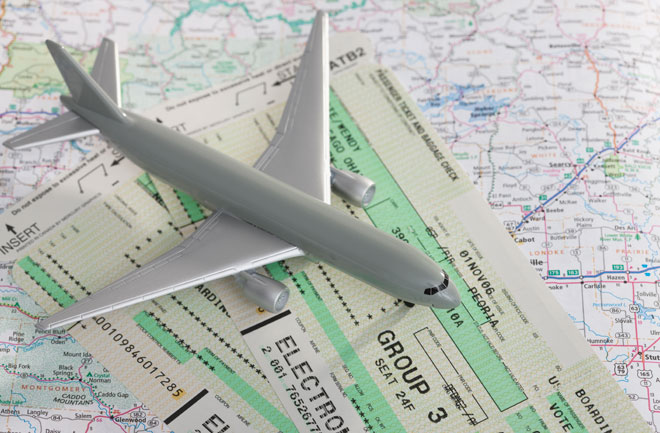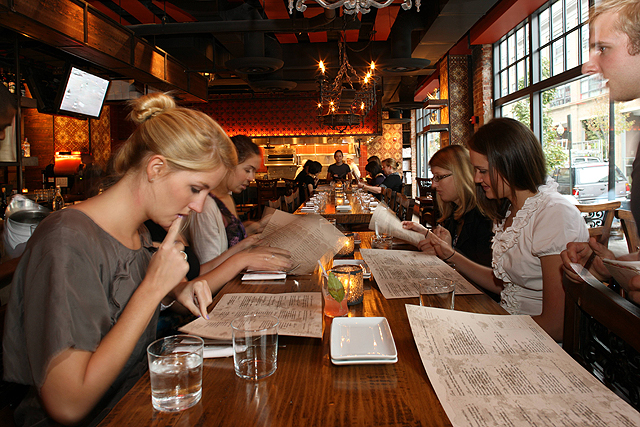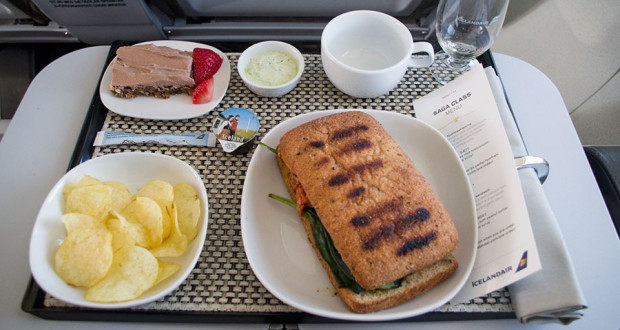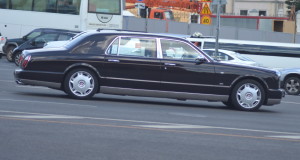Airplanes and peanuts: The two go together like movies and popcorn or ball games and franks. But how (and why) did those free baggies became such an airborne institution? We dug into the history of airline snacks and put together a list of airlines whose current snack options stand out from the pack.
Flying for Peanuts
In-flight food was once a vastly different affair than it is today. Starting in the late 1930s, bigger planes and smoother rides saw the introduction of kitchens in aircraft. Throughout the Golden Age of Air Travel that flourished mid-century, tight airfare regulations saw airlines upstaging each other via all-inclusive, linens-and-silver meal services, with each competitor angling for a superior in-flight experience.
It was really the emergence of Southwest Airlines in 1971 that established free peanuts as an airline-specific snack. The carrier was able to get around airfare regulations by operating only within Texas, which launched a fare war with rivals like Texas International. The airlines marketed their low prices as “peanut fares,” and Southwest eschewed full meals in favor of serving the very cheap nuts in alignment with their budget-conscious messaging.
A Low-Cost Staple
In 1978, industry deregulation saw airlines drop their fares. No longer as concerned with besting each other through impressive meals and enticing stewardesses, many carriers subsequently sacrificed the quality and quantity of free food to counterbalance the lower price points. Consumers were content to snack instead of chowing down with the same expectations as before, making cheap and long-lasting peanuts even more attractive.
When the events of September 11, 2001 hit the industry hard, companies adopted even more extreme cost-cutting measures. Free meals all but disappeared on domestic economy flights, replaced by the rise of for-purchase snack boxes. Peanuts and pretzels, along with basic soft drinks, largely withstood these changes to survive as standard, fully complementary service items.
Economics > Salty Science
This history puts to rest various folk theories as to why peanuts and pretzels became the de facto in-flight freebie, most of which revolve around the items’ high salt content. Since sodium increases fluid retention, some thinkthe snacks were specifically selected as a means to combat the dehydration caused by dry air and low cabin pressure. Others claim the salty handouts were chosen a ruse to trick passengers into ordering more drinks — similar to why nuts and pretzels are common bar snacks on the ground.
Setting aside possible benevolent or devious intentions, scientists actually have studied how dry air and other in-flight conditions — including ambient engine noise — reduce our sense of smell and wreak special havoc on our ability to perceive salty and sweet tastes. This insight has resulted in airlines battling blandness by stocking foods with extra salt, spice, or umami flavor. But while salt certainly may have something to do with it, the pervasiveness of peanuts can mainly be attributed to economics, thanks to their origin as a branding device for Southwest and their sheer cheapness.

Peanut Protests
However, the humble peanut has had its fair share of detractors. Over the years, groups spearheaded by individuals and parents of children with severe peanut allergies have lobbied against the free snack. In 1998, the Department of Transportation distributed an industry-wide letter advising airlines to create “peanut-free buffer zones” around allergic passengers who have provided advance notice. Again in 2010, the D.O.T. considered entire peanut-free flights as well as a comprehensive ban. In both cases, a Congressional rule requiring a peer-reviewed study assessing the danger of airborne peanut particles prevented passage of any enforceable ban. Nevertheless, after 2010, a handful of airlines ceased serving peanuts altogether.
Today’s Best (Free) Bites
 Due to increasingly vocal opposition in the past few years as well as a 2009 salmonella outbreak, peanut handouts are no longer quite as common as they used to be. But some airlines have gotten creative with their free snack alternatives, and these five carriers’ offerings are a cut above.
Due to increasingly vocal opposition in the past few years as well as a 2009 salmonella outbreak, peanut handouts are no longer quite as common as they used to be. But some airlines have gotten creative with their free snack alternatives, and these five carriers’ offerings are a cut above.
Southwest
Get the peanut packets that started the trend. Peanuts and pretzels remain complementary and have recently been joined by the TOFUnut, which promises a similar crunch with no allergy fears. And if you fly on some holidays, they’ll celebrate with a free alcoholic beverage.
Jetblue
This progressive airline has taken a page out of Southwest’s book by serving an in-flight snack that bolsters their marketing message. The startling color of their custom TerraBlues potato chips match the company’s brand and are on the healthier side too. PopCorners, Doritos, and various cookies round out the generous selection of freebies brought around in baskets by flight attendants.
Hawaiian Airlines
Hawaiian is an outlier among domestic airlines in that it still serves free meals on all trans-Pacific legs, with a menu designed by Honolulu celebrity chef Chai Chaowasaree. Dishes include teriyaki turkey meatballs with sugar snap peas in economy or Maui onion soup with pipikaula (salted, dried beef) in first class. The wide selection of snacks features many local products like Kona Furikake Chips and Hawaiian Host chocolate macadamia nuts.
Turkish Airlines
Sample Turkish meze (appetizers like hummus, olives, and Mediterranean salads) in coach to keep your energy up in between complimentary meals geared towards a restaurant experience. Turkish dishes like spinach- and cheese-filled Borek pastries provide a savory breakfast, with variations on lamb kabob for lunch or dinner.
Singapore Airlines
Even economy passengers have a wealth of options with the (free) Light Bite snacks available in between (free) meals. Offerings range from good ole peanuts to sandwiches and savory local noodle dishes. Singapore Airlines employs a stable of celebrity chefs to keep up their high-flying reputation, and in Premium Economy and above, passengers departing from select cities can pre-order special meals designed by the chefs through the Book the Cook feature.
 Living There
Living There


